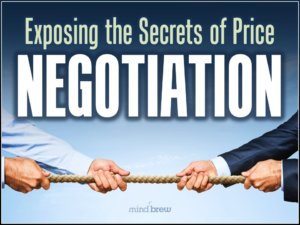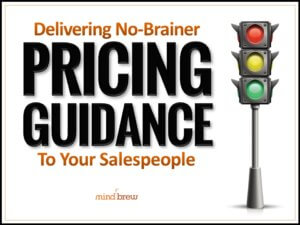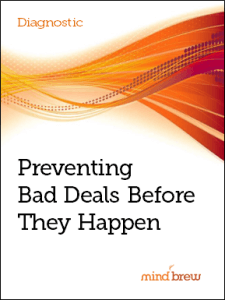In 17th century America, witchcraft was a crime punishable by death. But because the evidence of witchcraft tended to be scarce, the courts often relied on unusual methods to provide a woman’s guilt.
One particularly gruesome test employed by the Salem witch trials was known known as “swimming a witch.” Derived from traditions dating back to the Middle Ages, swimming involved binding a woman’s hands and feet, then throwing her into deep water. If she floated, the onlookers assumed that demonic forces had saved her, and they subjected her to further torture and punishment. If the woman sank to the bottom and drowned, everyone knew she was innocent.
But she was also, unfortunately, dead.
How salespeople swim, but never win
While the consequences aren’t nearly as dire, B2B sales team similarly find themselves in a no-win situation. Whether they win a deal or lose it, they are in for some harsh reactions from management.
If a customer demands a lower price during negotiation, the salesperson can give in to secure a deal. That’s a little like an accused witch choosing to float to avoid drowning. The salesperson gets the deal, but they may not have maximized margins. And management may consider them guilty of being a bad negotiator.
On the other hand, if the salesperson sticks to their pricing targets, they might lose the deal. They have proven themselves innocent of the accusation of being a bad negotiator—but at the price of the sale. It’s a little like a witch proving her innocence by drowning.
3 strategies for better negotiation
Fortunately for the sales team, pricing has some strategies that can help avoid these sorts of no-win situations:
- Training and empowerment: Forewarned is forearmed, as the saying goes. If you equip your sales team with knowledge of negotiation tactics, you give them the confidence to negotiate effectively. Exposing the Secrets of Price Negotiation details the tactics tricks that buyers commonly use and explains how you can help your sales team overcome them.
- Clear guardrails: Your sales team shouldn’t have to wonder how much discounting is too much. By providing them with a range of acceptable prices, you give them the flexibility they need to close deals as profitably as possible without fear of criticism after the fact. Delivering No-Brainer Pricing Guidance to Sales shows you how to strike the right balance that allows you to capture more sales without eroding margins.
- Post-deal analysis: Reviewing closed deals—without finger-pointing—can help you examine if your pricing strategies worked or not. Ideally, your company should learn something from every negotiation, becoming better at setting and sticking to prices over time. Finding Margin Leaks in Your Sales Processes lays out a strategy for comparing your operations with best practices.
By the late 1600s and early 1700s, witch swimming was widely seen for what it was—murder. And in 1735, it became a crime to accuse someone of witchcraft.
In the same way, you don’t have to allow no-win negotiation situations to continue in your organizations. By adopting the strategies above, you can give your teams everything they need to turn negotiation into a win-win situation.
















